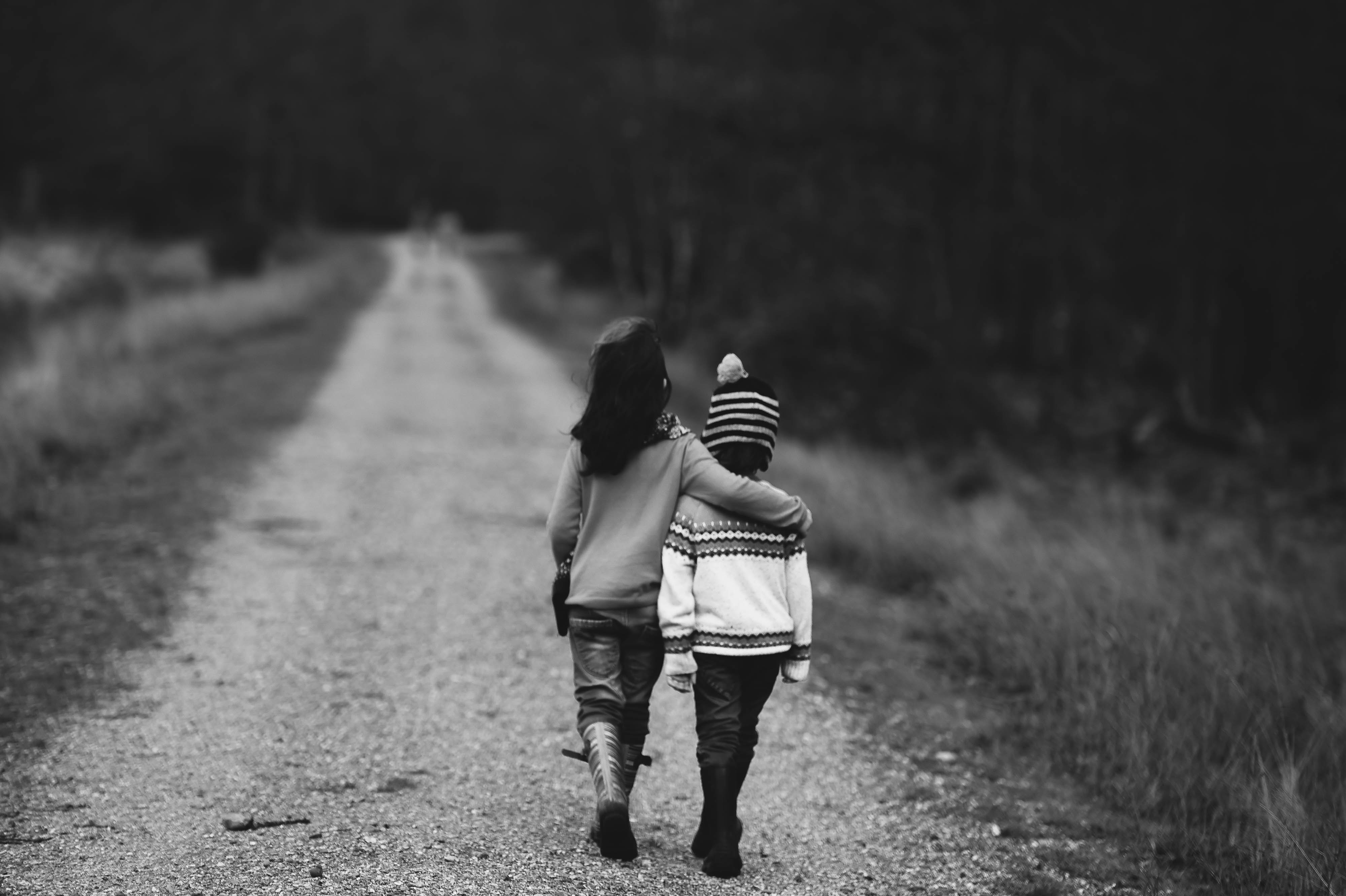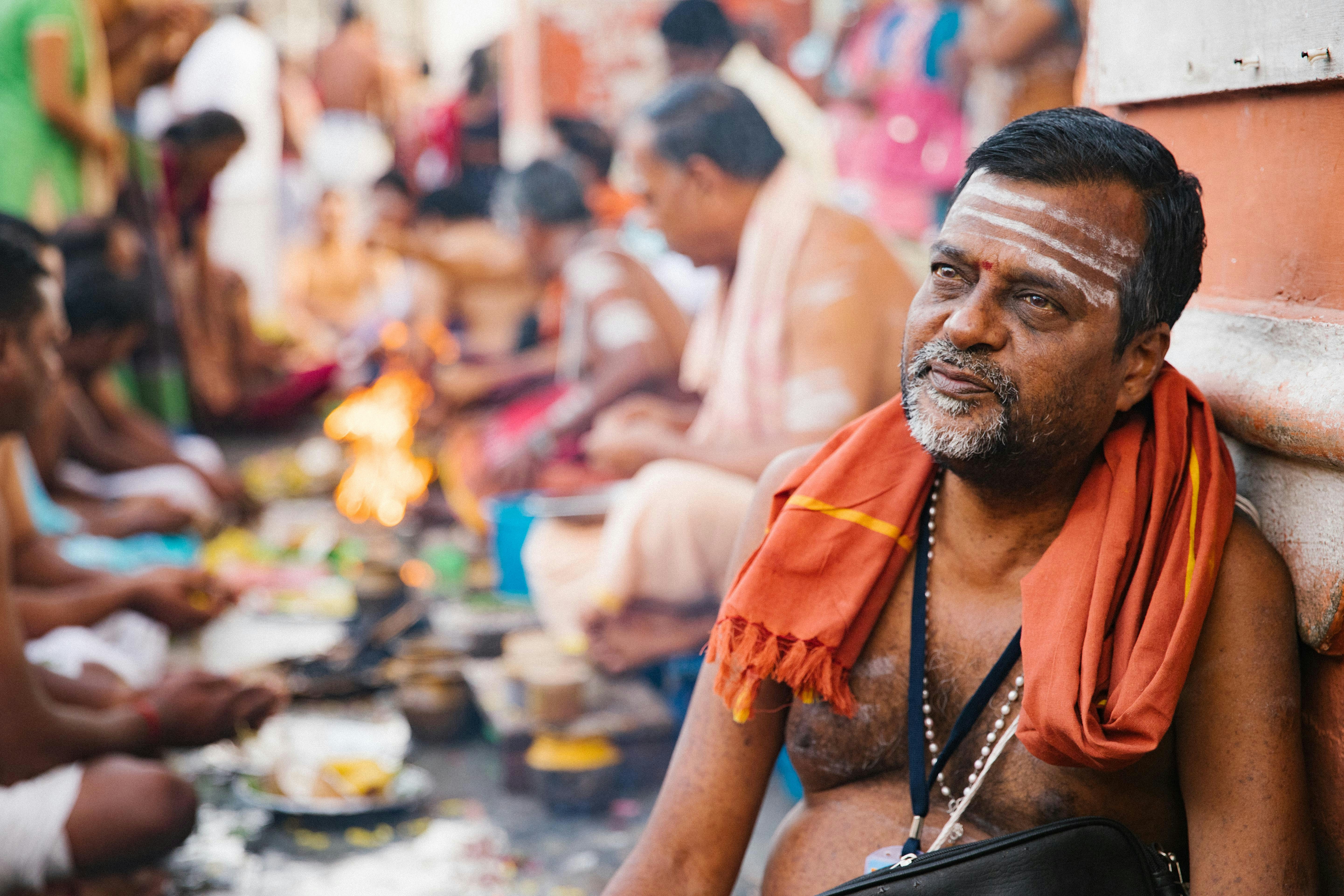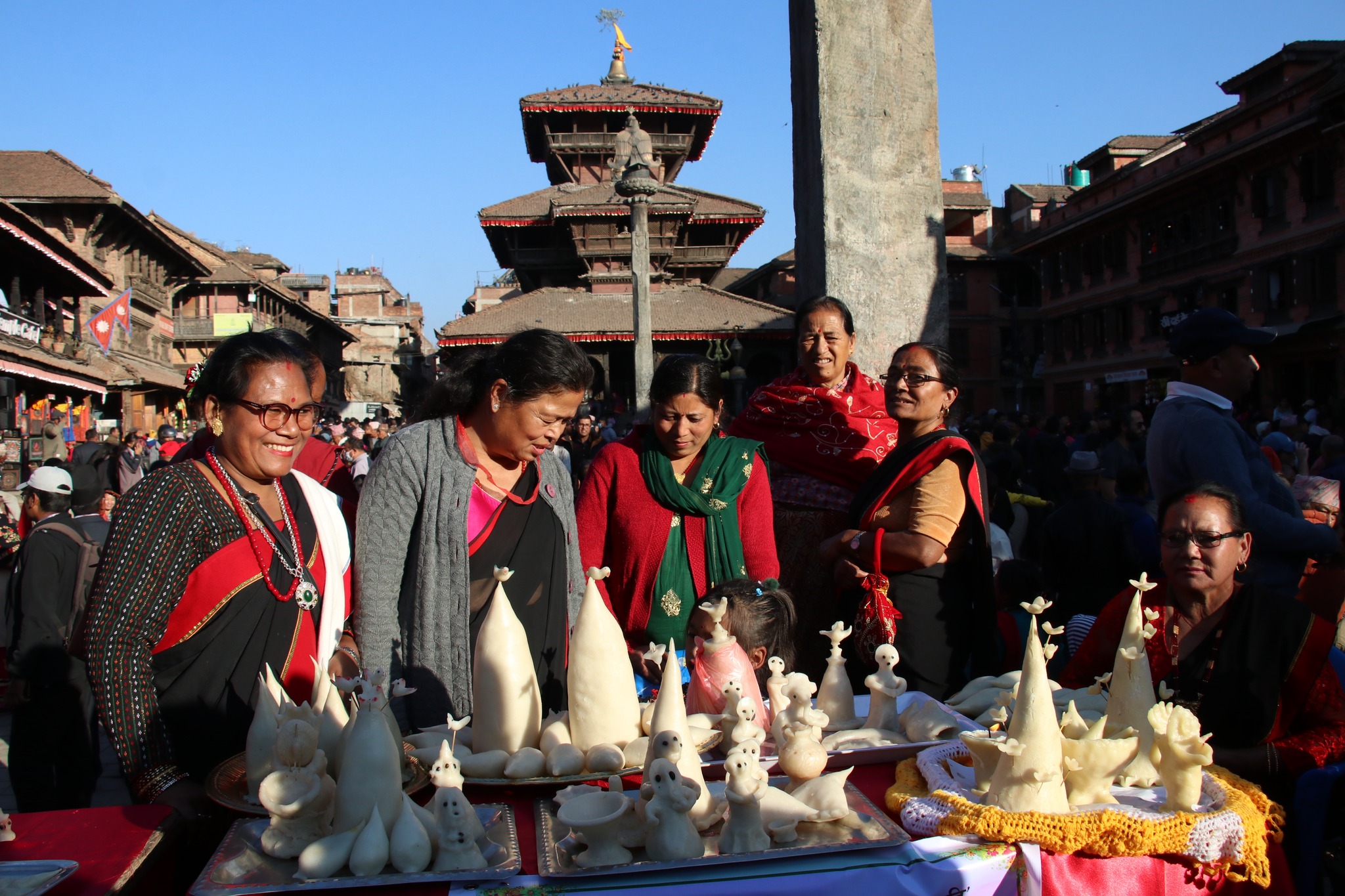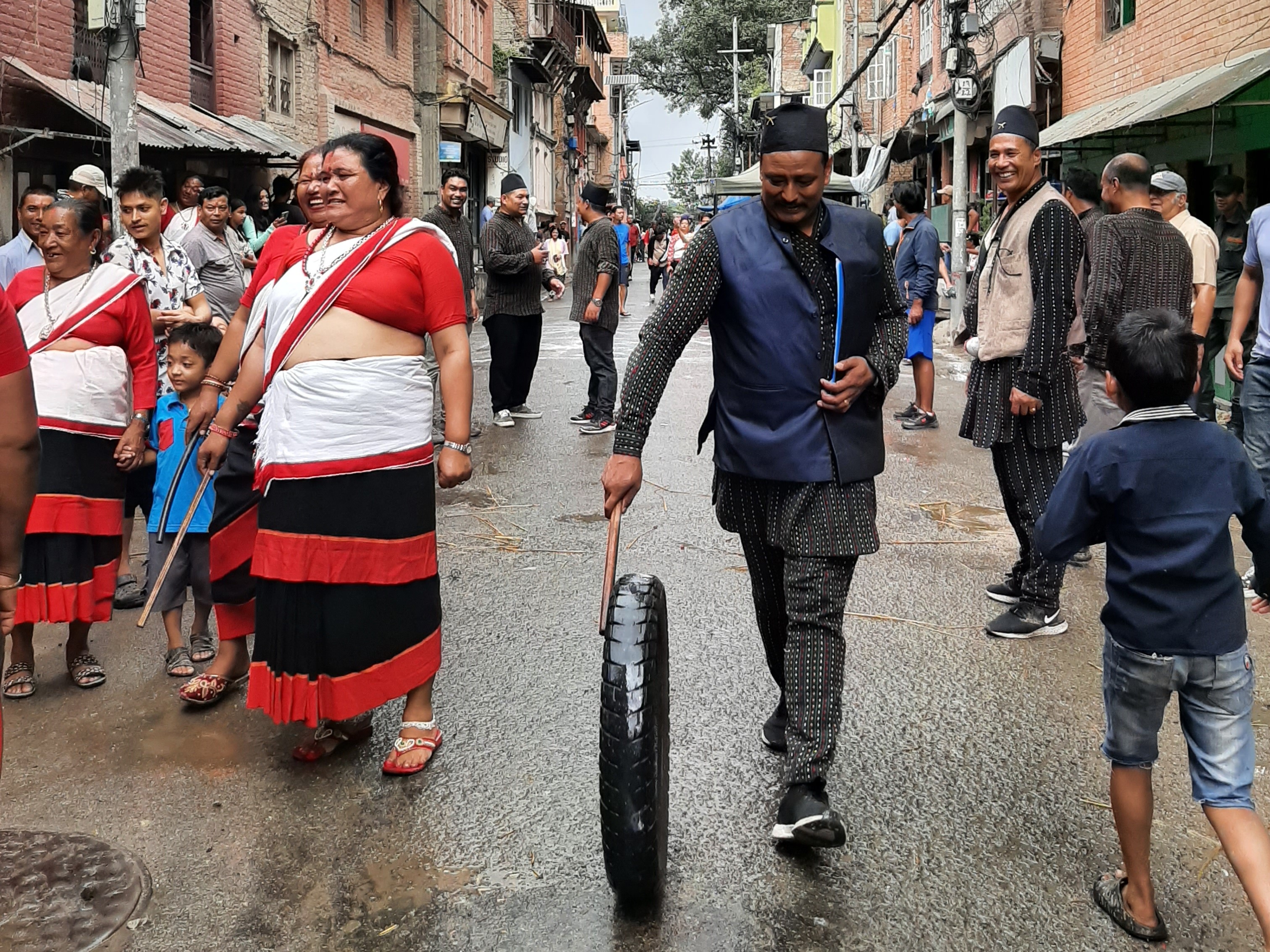Philippe Van Cauteren is the curator of Kathmandu Triennale (2017), a non-commercial, art initiative of Siddhartha Arts Foundation, which aims to promote Nepali arts and culture.
Devendra Gautam caught up with Cauteren, artistic director of Stedelijk Museum voor Actuele Kunst in Ghent, Belgium, to talk about his journey as a curator, the Nepali and global artscape, the mega quake, Guernica, expectations from the event and the emergence of Nepal as an international arts hub. Excerpts from the interview.
***
First of all, I would like to know about your journey as a curator. How did it begin?
It’s a long journey. It’s not 200 years old, but it’s a long journey (laughs).
It has been smooth all along?
It’s never smooth. It should not be smooth. Well, it goes back to when I was a young boy; 8-9 years old.
I went to visit the museum of fine arts in Antwerp in Belgium with my parents. I was a small boy and it was a huge building. I visited it and saw artworks from the 13th, 14th, 15th, 17th, 19th and 20th centuries. Of course, I did not know what I saw. I did not know if it was art or whatever it was. But seeing it, I was deeply impressed.
I saw things realistically painted like flowers painted as real as real flowers. Then I saw other things — of fingers being deformed with hands three times as big as in reality, so on and so forth. I did not know what was happening to me. But one thing I knew. While leaving the building, I said to my father: That’s what I want to do with my life. That’s it.
Apparently, there are people, who dedicate their life making paintings and sculptors. This had an incredible impact on me. By using colour and form and lines and certain way of painting things, you could communicate something, you could speak to someone, you could touch someone, you could open someone’s mind, you could give some ideas to the person, without using language, without speaking. By making images, you could do that.
So, to make the long journey a bit shorter, then I started to paint myself as a young boy. My parents were not very happy with that. They were thinking: Oh no! He will become an artist!
Did it have something to do with financial insecurity?
Maybe. It is like a life you don’t know whether will work or not. It was in the mid-70’s. Being an artist was not valued back then. You were more like an outsider if you wanted to become an artist. Then I told myself: Ok, when I cannot become an artist, maybe I have to become someone who can help artists. I had never heard of the word ‘curator’ till then but I had heard of the word ‘artistry’. So, I wanted to study artistry at the university in Ghent.
Again, my parents did not allow me because they thought that with artistry, I will never find a job in the world. Artists in Belgium were unemployed. They were doing something else, working in banks, doing other things. But as I am a bit stubborn, I studied artistry.
While I was studying, I called the Museum of Contemporary Arts in Ghent, the city where I am living. I called the director to say: Listen, I heard you are in trouble. And I asked: Do you need help? The next day, he said I could start working in the museum. Man, this is incredible! I felt. Suddenly, I can be really close to the artwork, I thought. It was contemporary art.
When you are 16, you don’t necessarily understand what you see. But I was always convinced of one thing: If someone makes something as an artist, you have to trust the person. Even if what the artist does looks very simple, looks very easy to do, you know, there’s a reason he or she does it. There’s a kind of motivation behind it.
I was always defending contemporary artists to friends, who had a more classical understanding and taste of arts. Then I started to work in the museum, but not as a curator, not as an art historian. I started working in the museum as a carpenter, as a guard, as a cleaning man and as a librarian.
Only gradually, I had the occasion to host the first exhibition. It was with Marina Abramovich. She is 70 years old now. She can be called the godmother of performance art. She can be called one of the top 10 or 20 most important artists in the world. She is from former Yugoslavia, now living in New York. And as a young guy (25-26 years old), I had to make an exhibition with her with her monuments. This was my first practice as a curator.
But I always had a kind of double feeling with the idea of curating. As you might now, the word ‘curator’ comes from the word ‘curare’ in Latin. And ‘curare’ means to ‘care for’, which means to help, to give feedback, to give support to artists. Often, too often, you know, curating is misunderstood and is not anymore about helping or supporting artists.
In my practice, I try to focus on the artists more than on anything else because I have extremely big respect for artists. It does not mean that I like all the artists. But I understand and I have respect for what artists do, for the fragility with which they try to create artworks. By showing their works, they are taking a risk. An artwork is something through which you show your own identity and your own being as a matter of speaking.
You were talking about respecting art and the artist. How is the situation of artistic freedom in our country and other parts of the world? Isn’t it in jeopardy?
Artistic freedom does not mean that you can do anything you want.
You mean it has boundaries, like any other freedom?
I think if you are a good artist and a smart artist and a sensible artist, then you have an understanding and respect for the context in which you work and live. And I think every artist takes a political position just by being an artist, even if it’s not manifested in his present work. Because by being an artist, he takes another position in society than a lawyer, or than a butcher, or than a metal worker or a farmer.
I understand and I have respect for what artists do, for the fragility with which they try to create artworks. By showing their works, they are taking a risk.
But I know what you’re saying. Some artists are criticising with their work, or using their work or using their position as an artist to criticise some socially or politically or culturally complex and critical situations in a country. There are plenty of examples of artworks or of artists who have been censored, whose works have not been realised. Artists have been jailed because of the fact that they took a position. And I think we have to defend the right, the position that the artists take.
How do you find the art scene in Nepal?
An artist from Argentina is informed by his social and cultural contexts. An artist from Nepal is informed by his social and cultural backgrounds. Ditto with artists from other countries like Thailand. I have big respect for artists in Nepal.
We should not use the invention of borders as a mechanism to define art or the position of art. But I have a big respect for artists from Nepal. Clearly, it is more difficult to be an artist here than it is in Belgium, Denmark and England. May be only three per cent of artists can live from their work in Belgium and are successful. Other artists have still have to do plenty of other jobs to make their living. Still, art is a fragile job when you take it seriously unlike when you take art as some form of decoration which will sell. If you are a dedicated, motivated artist, then art is fragile, not easy.
Of course, I understand the complexity of being an artist in a country like Nepal. But I strongly believe that the society is in a kind of flux, in a kind of change. It is facing many questions at different levels. This is also a kind of fertile ground for the artists. Artists should be more courageous. They should not hide behind their paintings.
We had a decade-long insurgency. Then the earthquake occurred. I have read that Picasso’s Guernica is based on the Spanish civil war. In Nepal, despite the war, despite the quake, we have not been able to create any classics. Why?
I think I have a clear answer: Art is still too much seen as a form of decoration, more than a language. Many works of art I see — I say this with respect for every artist, who don’t understand me — have a very decorative quality. They take elements from the tradition, from religion but they don’t transform it into something else. They just copy what they see.
Guernica. Paris, June 4, 1937. Oil on canvas, 349.3 x 776.6 cm. Source: Wikimedia Commons
Before Picasso, there were artists, who used to paint what they saw. They were trying to catch the lights, they were not communicating something. Later, Picasso said: As an artist, I take the responsibility to address the tragedy happening in the city of Guernica.
I think a big part (in the creation of classics) has something to do with art education.
Historically, Nepal was prosperous when its two giants India and China were formidable powers. We used that prosperity to build heritages like temples and palaces. But the art suffered after the two giants’ powers dwindled. Now, China and India are rising again as superpowers. In this context, do you see art flourishing in Nepal again?
We have to embrace the past to build the future. We don’t need to be nostalgic about the past. This will bring nothing. We have to see how we can face the future. I would not be here if I did not see the potential of Nepal and the city (Kathmandu) in the arts. We have a big group of artists who take the kind of social position they do.
After the quake, some artists went to the city of Bhaktapur to help out quake victims. Here, in this country, there are artists with energy and dynamism, which is unique. I have worked in plenty of countries, but this is unique to me.
Nepal is like a butterfly. It is like Belgium of Southeast Asia. You know, Belgium is located between giants like Germany and France. Belgium has a very strong artistic tradition. Artists should be self-critical. They should not see themselves as someone, who makes products.
Thanks to the triennale, more than 60 artists from 25 countries are coming to Kathmandu. There are artists, who are collaborating with UNCHR, with orphanages, and artists who reflect on the heritages. This is of incredible importance. This gives us an opportunity to tap the potential of artists. These artists are available for meetings with the people of Kathmandu. Kathmandu has all the potentials required to be an art hub. Here, you have the sense of the traditional and the contemporary.
There’s big interest, big fascination about the triennale, about what’s happening in Kathmandu. I hope once it (the exhibition) begins from March 24, politicians and policymakers of the country can understand how important an exhibition like this can have on the quality of life in the city of Kathmandu.
While I know that every developing country has other issues at stake but this exhibition gives us a unique opportunity to inspire people through art. Everything starts with the people.
Global politics is changing. Donald Trump has risen, then there’s Brexit and developed countries are looking inward. What impact these developments will have on the artscape?
I am not a fortune-teller. I can’t predict what will happen to the arts in the future.
But as Europeans, we have to be very sensible and very open. I think the reactions happening in Europe — to close the borders, to look inside, France is for the French — are very stupid. I think now is the moment not to protect the borders but to protect our values. And the values are tolerance and justice. The values that came from the French revolution have to do with a sense of humanity, not with making barriers between each other.
Now is the moment not to protect the borders but to protect our values.
So, we are living in very difficult moments. The transformation that is going to happen will be huge on the political level. I think within 10 years, we will live in another world. Recently, I was in Avril, Iraq, close to the fighting zone of Mosul. I was with the former prime minister of Kurdistan. We were watching the inauguration of Donald Trump. He was saying to me: Listen, we are watching something of which the effect will be immeasurable for everyone in the world. How it will be, I don’t know.
Kathmandu is a rapidly urbanising city. In the developing world, it is one of the most rapidly urbanising cities. Will this rapid urbanisation have an impact on the traditional art scene?
It will. But I hope traditional art can still survive. Let’s hope people continue to have respect for the traditional art. Let’s hope they are preserved not only by the museum but also by the people. At the Patan Museum, I saw people sculpting on the wooden bars. They were rebuilding a temple. This is fantastic.
This is a tradition that you hand over from one generation to the other. Of course, in the process of urbanisation, you get something but you lose also. It’s like a pendulum, going back and forth. I think the tradition is important if it feeds the future, if it forms the future, not if it is something which stops change.
Your expectations from Kathmandu Triennale 2017?
This exhibition will bring the best artists of the world to Kathmandu. People here and artists can benefit from it. I have a lot of expectations from the triennale. Thanks to the exhibition, Kathmandu can get international attention, which is not only through negative things like the earthquake but also through articulation of the cultural values of Kathmandu. That’s one thing.
Secondly, we hope that Nepali artists really benefit from the exhibition, that something good will come out for the future. That’s another thing I hope. Thanks to the exhibition, people can discover Kathmandu in a different way. Between all the dust and construction sites, they can see the beauty of this place, which is, according to me, enormous. That’s why the title of the exhibition is ‘The City, My Studio / The City, My Life’.
I hope people support this endeavour, hope people understand how art can contribute to the social texture of a city, even in difficult situations. Art can contribute to society.
For me, the exhibition is a tribute to the city and the tribute to the artist.
(Kathmandu Triennale 2017 will be held from March 24 – April 9, 2017.)
***
Read also
Nepal’s pioneer contemporary painter Giri’s journey from Varanasi to Norway
Painter Jatin Das: Our families want children to be no more than ‘mid-level’ workers
I came here to make an impact, but Nepal made an impact on me: ‘Burning Man’ sculptor David Best
























